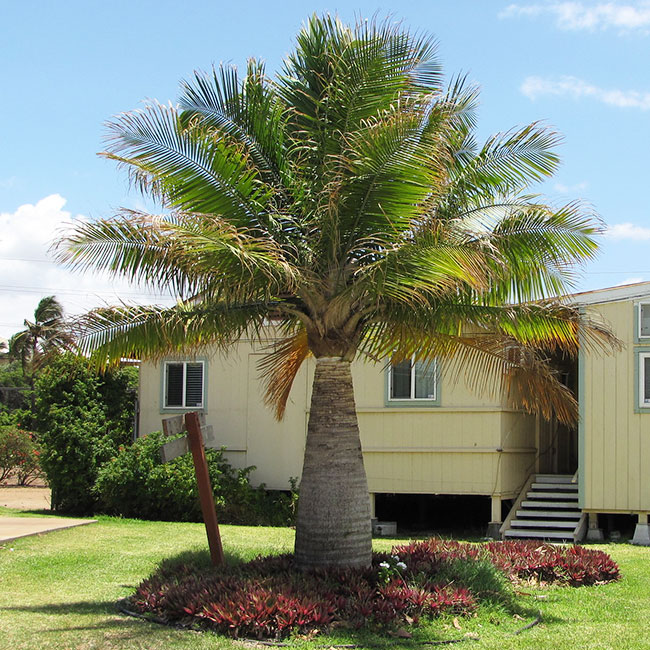
Ravenea rivularis, commonly known as the Majesty Palm, is a popular tropical palm species known for its graceful and elegant appearance. This palm is native to Madagascar and belongs to the Arecaceae family.
Majesty Palms are characterized by their feathery, pinnate fronds that can reach lengths of up to 8-10 feet, creating a lush and tropical aesthetic.
In cultivation, they are often used as decorative indoor plants or outdoor landscaping in tropical and subtropical regions. Majesty Palms thrive in well-drained soil and require consistently moist conditions to flourish. They are not particularly cold-tolerant and are best suited for USDA hardiness zones 10-11.
Quick Facts:
| Scientific name: | Ravenea rivularis |
| Common names: | Majestie Palm, Majestic Palm |
| Origin: | Native to Madagascar |
| Growth Rate: | Slow to Moderate. Up to 10 – 20 ft tall and 5-10 ft wide. |
| Cold Tolerance: | USDA Zones 9b (25 to 30 F) to 11 (above 40 F). |
| Light Req: | Low to Moderate, Moderate, Moderate to High. |
| Water Req: | Moderate. |
| Soil Req: | Widely adaptable. |
| Fruit: | Yes. |
| Propagation: | By seed. |
Majesty Palm Appearance
When mature, Majesty Palms can reach heights of 10 to 15 feet (3 to 4.5 meters) or more, making them an ideal choice for adding height and a tropical touch to indoor or outdoor landscapes.
Majesty Palms are known for their elegant and feathery fronds. These fronds are pinnate, meaning they have rows of leaflets extending from a central stalk. The fronds can grow quite long, typically reaching lengths of 8 to 10 feet (2.4 to 3 meters). They arch gracefully outward and create a lush, tropical canopy.
Each frond of the Majesty Palm is made up of numerous leaflets arranged in a feather-like pattern. The leaflets are narrow, lance-shaped, and have a glossy, deep green color.
The trunk of the Majesty Palm is slender and usually covered in a fibrous, brown sheath from old leaf bases. This gives the palm a somewhat textured appearance.
Flowers and Fruits of the Majesty Palm
Ravenea rivularis produces small and inconspicuous flowers that are typically cream-colored. These flowers are borne on long stalks and are not particularly showy or fragrant.
Majesty Palms do produce fruit, but it’s not a commonly observed feature in indoor or cultivated specimens. The fruit is typically small and round, with a reddish or orange hue when ripe.
It contains a single seed and is not typically consumed by humans. In its natural habitat, the fruit serves as a food source for wildlife.
Caring for the Majesty Palm
This palm can grow to heights of 10 to 20 feet and has a width ranging from 5 to 10 feet. The Majesty Palm is a popular choice as a houseplant, known for its ability to quickly reach heights of up to 10 feet. Its tall, lush green fronds make it an excellent addition to any room.
However, it’s important to note that while it thrives as an indoor plant for a few years, it will eventually outgrow its pot and should be transplanted outside. Kentia palms are a better choice for long-term indoor growth, as Majesty Palms can slowly decline when kept indoors for extended periods.
Majesty Palms can tolerate temperatures as low as 25°F and are suitable for USDA Zones 9b (25 to 30°F) to 11 (above 40°F). They are adaptable to various light levels, making them a versatile choice.
Proper drainage is crucial for this plant, as you should avoid allowing its roots to sit in water, but also refrain from letting it dry out completely between watering. Maintaining slightly higher humidity levels is beneficial, and misting the plant daily can enhance its beauty.
During summer, frequent watering is recommended, while in winter, watering once a week suffices. Be cautious not to overwater the crown if the plant is outdoors, as Majesty Palm crowns are sensitive to excessive moisture.
Growing Majesty Palms outdoors is relatively low-maintenance, especially in Florida, where they thrive with minimal attention. However, in California’s colder winters, protective measures like wrapping may be necessary.
To prevent nutritional deficiencies, apply a high-quality palm fertilizer with a continuous-release formula twice a year during the growing season.
Common pests for this plant include scale and mites. If pest problems arise, misting the plant with a soapy water mixture can help, and if spider mites persist, stronger sprays from a gardening store may be required.
Majesty Palm Propagation
Propagation is done through seeds, which should be collected when fully ripe, cleaned, and promptly sown due to their limited shelf life. Plant them in well-draining soil mix at a depth of 1 inch, keeping them warm, lightly moist, and in filtered sunlight.
Regular fertilization is essential to maintain their deep green color. Overall, the Majesty Palm is an affordable and easy-to-grow choice.
Majesty Palm Pictures
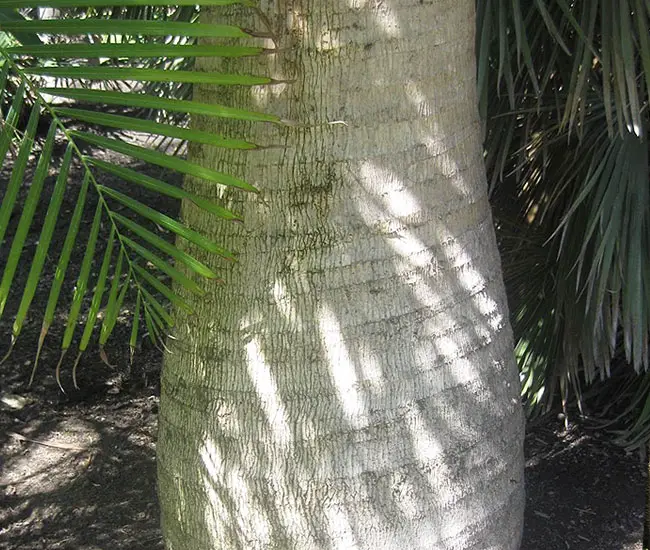
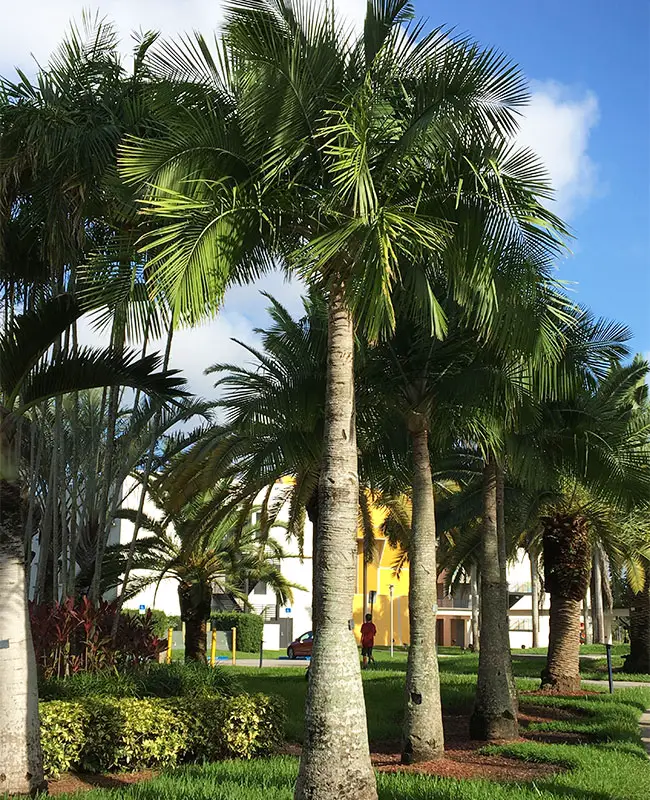
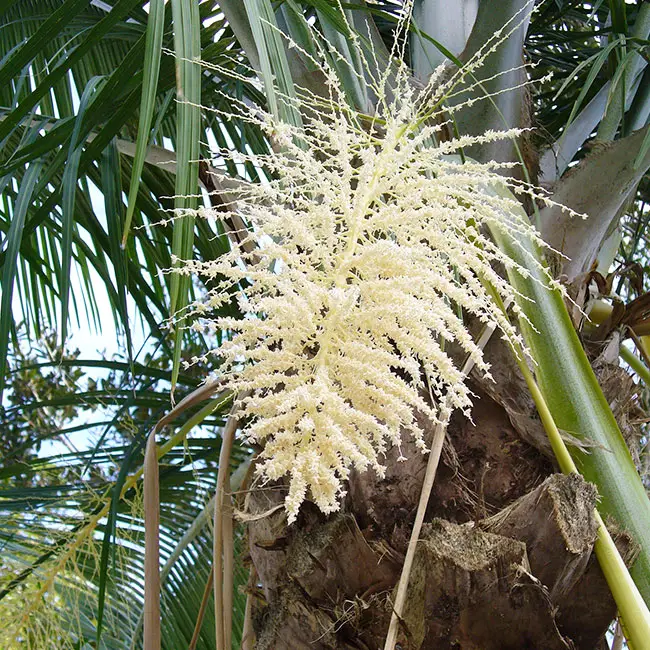
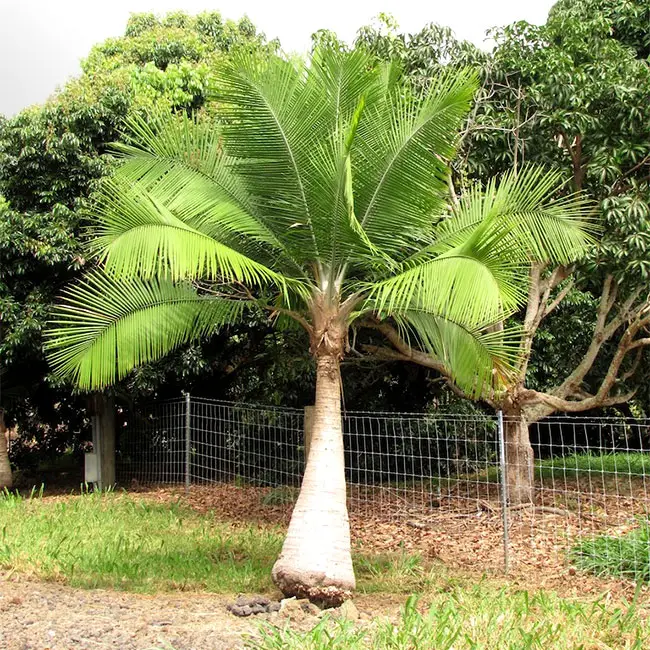
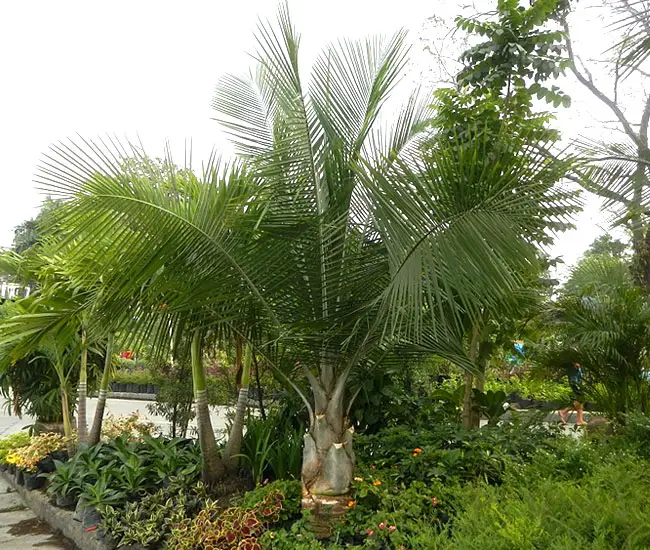
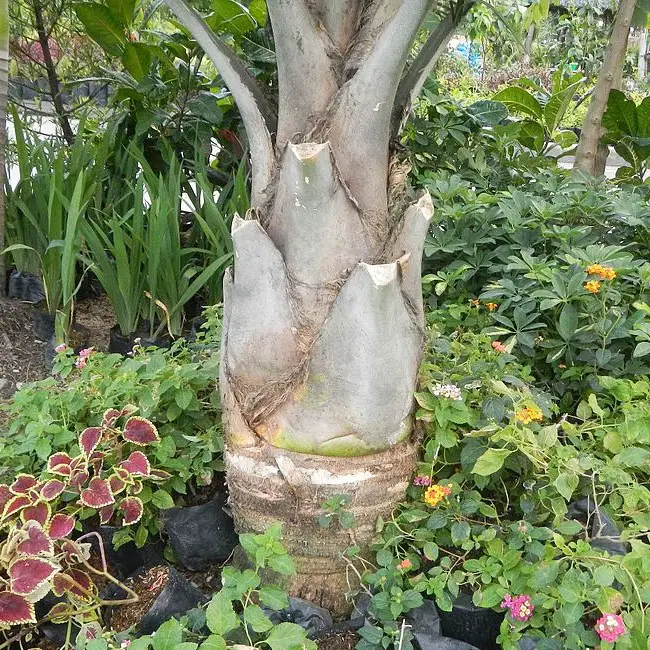
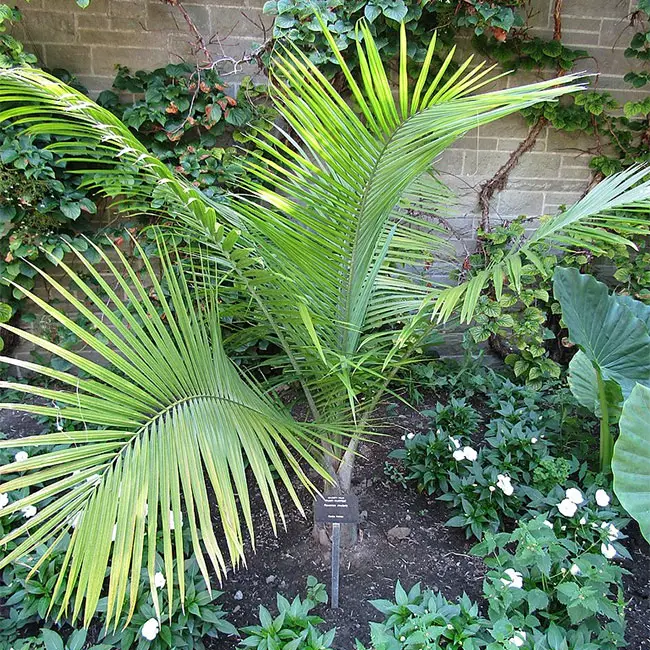
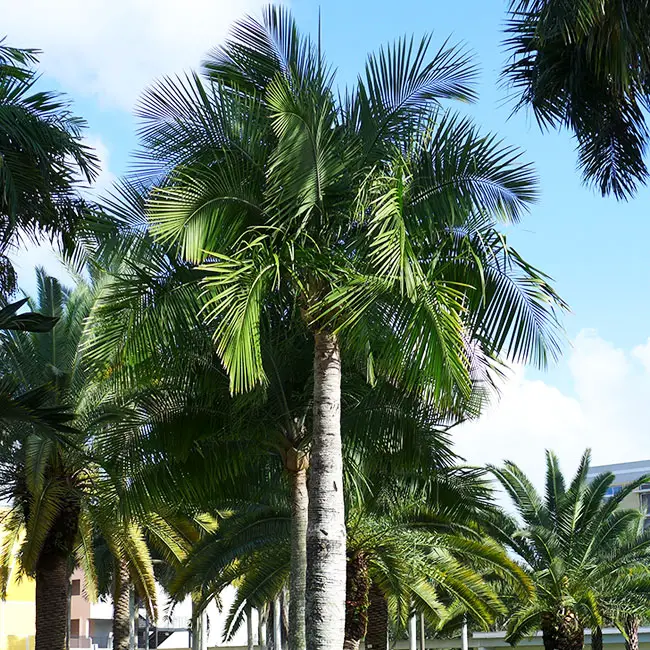
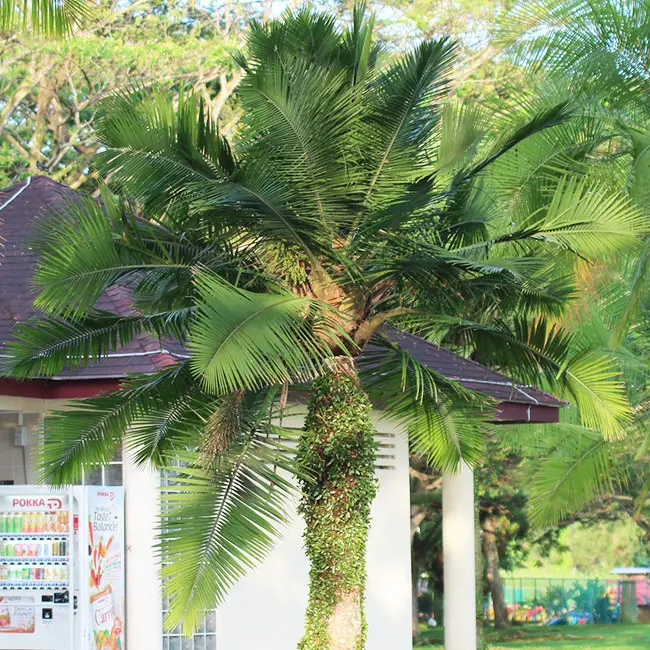

I think I have 2 majestic palm trees, they were a gift. I have them in pots on one side of the pool. I would like to plant them one on each side of pool. I do not want the fruit falling in the pool, so what can I do to prevent this?